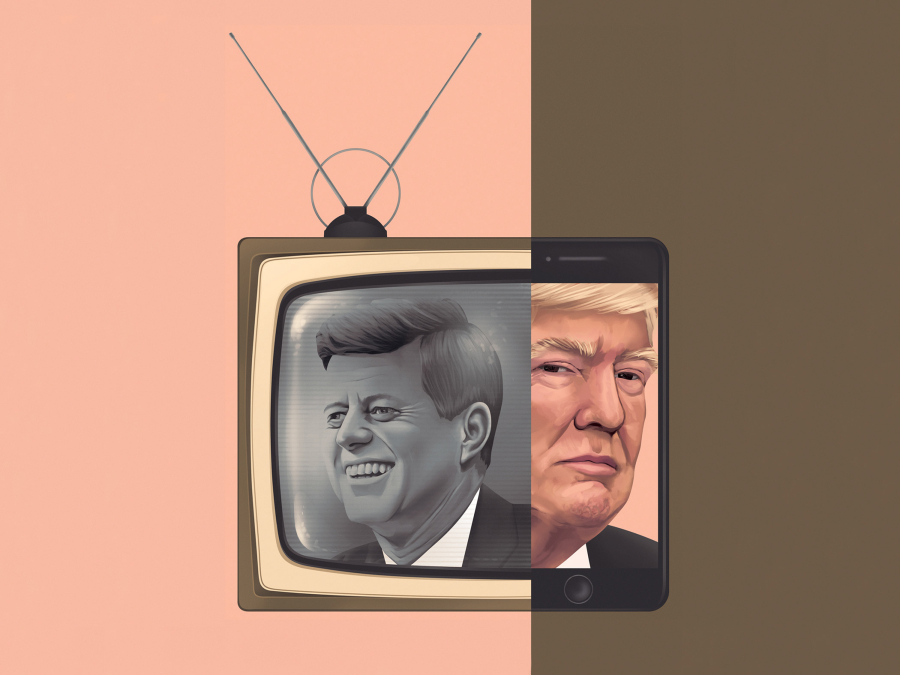Nearly a year before the 1960 presidential election, Sen. John F. Kennedy displayed a startling sense of prophecy about the influence of television in politics.
Writing in the Nov. 14, 1959, issue of TV Guide more than a month before he announced his candidacy, Kennedy seemed to foresee a crucial moment in the battle for the White House. As though visualizing Richard Nixon’s doomed visage — dark and sweaty — and his own youthful charm on national television during the presidential debates, the senator declared: “Many new political reputations have been made on TV — and many old ones have been broken.”
Once in the White House, Kennedy, who was born 100 years ago May 29, embraced the mantle of America’s first television president, using the small screen to enhance his image and to communicate with the nation. As he told his speechwriter Ted Sorensen after watching a replay of his smooth performance at a news conference, “We couldn’t survive without TV.”
Just as Kennedy navigated his way to the White House in 1960 by looking good on the new medium of television, Donald J. Trump captured the Oval Office in 2016 in no small measure by his savvy exploitation of the newer medium of Twitter. “I think that maybe I wouldn’t be here if it wasn’t for Twitter,” Trump told Fox News’ Tucker Carlson in March. “I have my own form of media.”



